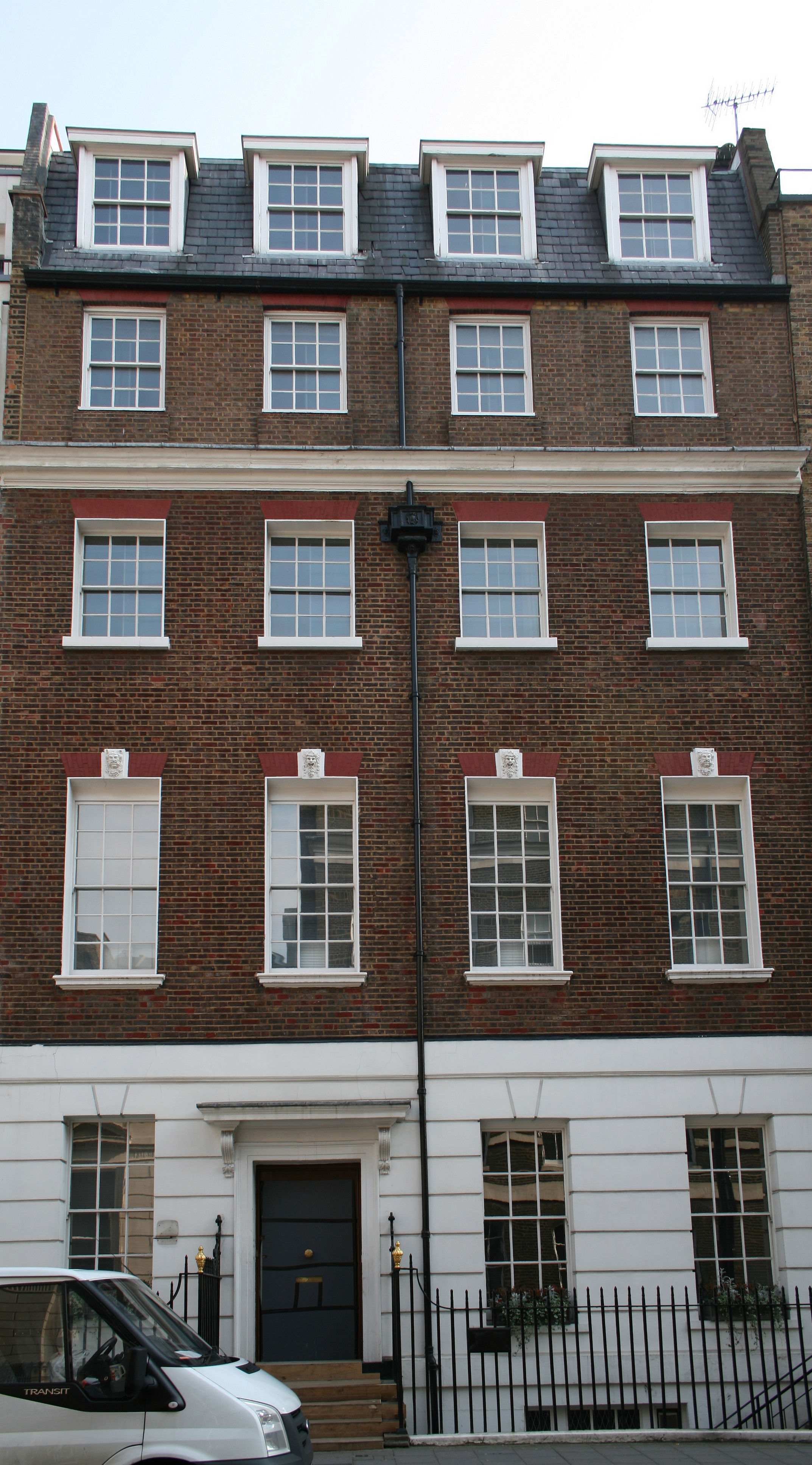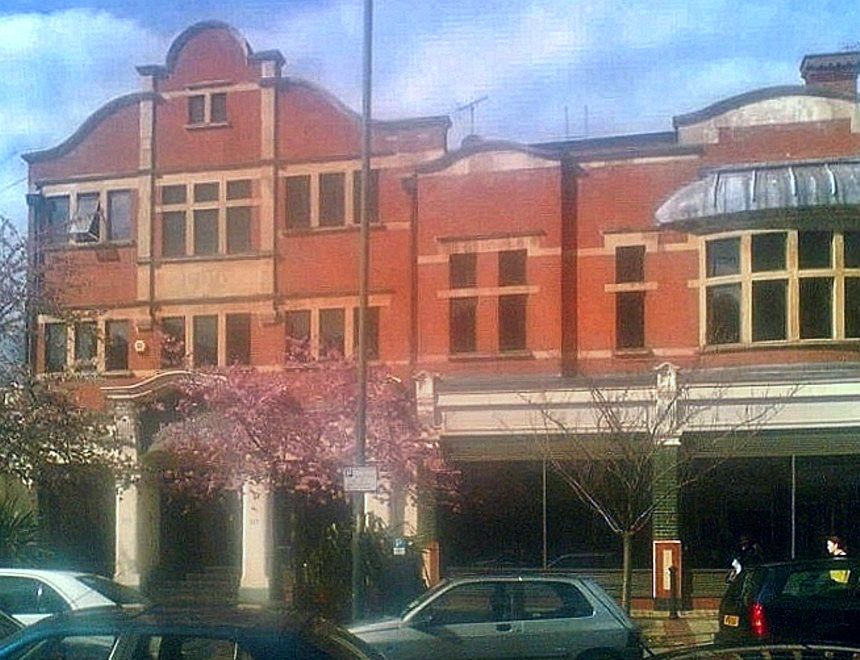|
Teddy Boy (song)
"Teddy Boy" is a song by Paul McCartney included on his first solo album ''McCartney'', released in April 1970. According to Ernie Santosuosso of ''The Boston Globe'', it describes the way in which a close relationship between a widow and her grown son is destroyed by her new romantic interest. Background Paul McCartney wrote "Teddy Boy" during the Beatles' 1968 visit to India. In 1970, McCartney described the song as, "Another song I started in India and completed in Scotland, and London gradually. This one was recorded for the ''Get Back'' film, but later not used." Recording January 1969 McCartney first played the song to the other Beatles on 9 January 1969. The Beatles did not return to the song until 24 January, recording several takes. This recording includes some instances of guitar feedback. During one rendition of the song, John Lennon is heard calling "do-si-do" and other square-dance steps, something both musicologist Walter Everett and Beatles historian Mark Lewis ... [...More Info...] [...Related Items...] OR: [Wikipedia] [Google] [Baidu] |
Walter Everett (musicologist)
Walter Everett is a music theorist specializing in popular music who teaches at the University of Michigan. His books include ''The Beatles as Musicians: Revolver through the Anthology'' (1999, ), which has been called "the most important work to appear on the Beatles thus far",The 2007/2008 Kjell Meling Award , ''Penn State Altoona''. and its follow-up volume, ''The Beatles as Musicians: The Quarry Men through Rubber Soul'' (2001). He also wrote ''The Foundations of Rock: From 'Blue Suede Shoes' to 'Suite: Judy Blue Eyes (2008, ) and has contributed to titles in the Cambridge Companions to Music series. Gary Burns, editor of the journal ''Popular Music and Society'', describes Everett's ''Be ... [...More Info...] [...Related Items...] OR: [Wikipedia] [Google] [Baidu] |
Let It Be (1970 Film)
''Let It Be'' is a 1970 British documentary film starring the Beatles and directed by Michael Lindsay-Hogg. The film documents the group's rehearsing and recording songs in January 1969 for what was to become their twelfth and final studio album ''Let It Be''. The film includes an unannounced rooftop concert by the group, the last public performance of the four together. The film was originally planned as a television documentary that would accompany a concert broadcast. When plans for the concert broadcast were dropped, the project became a feature film production. Although the film does not dwell on the dissension within the group at the time, it provides some glimpses into the dynamics that would lead to their break-up. After the film's release, John Lennon, Paul McCartney, George Harrison and Ringo Starr won an Academy Award for Best Original Song Score. The film ''Let It Be'' has not been officially available on home video since the 1980s, although original and bootleg ... [...More Info...] [...Related Items...] OR: [Wikipedia] [Google] [Baidu] |
Kum Back
''Kum Back'' is the first bootleg album by the Beatles, released in January 1970. The album is an early version of what would become ''Let It Be'', sourced from a tape recording of an acetate prepared by the band's engineer, Glyn Johns. It is one of the earliest commercial rock bootlegs, the first being ''Great White Wonder'' by Bob Dylan which was released several months earlier. Background In January 1969, the Beatles began rehearsing new songs at Twickenham Film Studios for a planned concert to be recorded and released as a television special and album. From the start, the project was hindered by disagreements, indecision and tensions within the group, culminating in George Harrison's temporary departure from the band. Harrison returned after a few days and rehearsals were moved to their new studio located in the basement of Apple headquarters at 3 Savile Row. Unlike Twickenham, these sessions were recorded on multitrack tape recorders. After the first week of rehearsals at Ap ... [...More Info...] [...Related Items...] OR: [Wikipedia] [Google] [Baidu] |
Olympic Studios
Olympic Studios was a renowned British independent commercial recording studio based in Barnes, London. It is best known for its recordings of many artists throughout the late 1960s to the first decade of the 21st century, including Jimi Hendrix, the Beatles, the Rolling Stones, David Bowie, Led Zeppelin, Ella Fitzgerald, Queen, Ray Charles, the Who, B.B King, Traffic, Prince, the Eagles, Eric Clapton, Madonna, Adele and Björk. It is often regarded as being as significant as Abbey Road Studios, and remains an important cultural landmark. The studio's sound mixing desks became famous when the technology and design they pioneered was manufactured commercially. Although much of Olympic has returned to its original purpose as a cinema, it also still maintains a small recording facility, designed with the help of original members of the studio's staff, who are now also involved in the construction of a much larger studio, performance and teaching space, to run alongside Olympic' ... [...More Info...] [...Related Items...] OR: [Wikipedia] [Google] [Baidu] |
Let It Be (Beatles Album)
''Let It Be'' is the twelfth and final studio album by the English rock band the Beatles. It was released on 8 May 1970, almost a month after the group's public break-up, in tandem with the documentary of the same name. Concerned about recent friction within the band, Paul McCartney had conceived the project as an attempt to reinvigorate the group by returning to simpler rock 'n' roll configurations. The album topped charts in many countries, including both the UK and the US, but was a critical failure at the time, and ''Let It Be'' came to be regarded as one of the most controversial rock albums in history. Retroactively, general response has since become much more favorable. The album’s infamous rehearsals began at Twickenham Film Studios in January 1969 as part of a planned television documentary showing the Beatles' return to live performance. The filmed rehearsals were marked by ill feeling, leading to George Harrison's temporary departure from the group. As a con ... [...More Info...] [...Related Items...] OR: [Wikipedia] [Google] [Baidu] |
Glyn Johns
Glyn Thomas Johns (born 15 February 1942) is an English musician, recording engineer and record producer. Biography Early history Johns was born in Epsom, Surrey, England. He had three siblings, two older sisters and a younger brother, Andy. When Johns was 8 years old his mother enrolled him in the parish church choir where he eventually became head chorister. Johns expressed a fondness for his experience in the church choir commenting that it led to his further involvement in music and a career he had never expected to be involved in. Aside from the choir, his mother's brother, Robert, and the choirmaster/organist at St. Martin's Parish Church, Felton Rapley, also influenced and encouraged his interest in music. Career in recording Johns produced and/or engineered with artists such as Led Zeppelin, the Rolling Stones, the Beatles ( ''Get'' ''Back'' sessions), the Who, Eagles, Bob Dylan, Linda Ronstadt, Johnny Hallyday, the Band, Eric Clapton, the Clash, Ryan Adams, the Ste ... [...More Info...] [...Related Items...] OR: [Wikipedia] [Google] [Baidu] |
Overdubbing
Overdubbing (also known as layering) is a technique used in audio recording in which audio tracks that have been pre-recorded are then played back and monitored, while simultaneously recording new, doubled, or augmented tracks onto one or more available tracks of a digital audio workstation (DAW) or tape recorder. The overdub process can be repeated multiple times. This technique is often used with singers, as well as with instruments, or ensembles/orchestras. Overdubbing is typically done for the purpose of adding richness and complexity to the original recording. For example, if there are only one or two artists involved in the recording process, overdubbing can give the effect of sounding like many performers. In vocal performances, the performer usually listens to an existing recorded performance (usually through headphones in a recording studio) and simultaneously plays a new performance along with it, which is also recorded. The intention is that the final mix will contain ... [...More Info...] [...Related Items...] OR: [Wikipedia] [Google] [Baidu] |
VU Meter
A volume unit (VU) meter or standard volume indicator (SVI) is a device displaying a representation of the signal level in audio equipment. The original design was proposed in the 1940 IRE paper, ''A New Standard Volume Indicator and Reference Level'', written by experts from CBS, NBC, and Bell Telephone Laboratories. The Acoustical Society of America then standardized it in 1942 (ANSI C16.5-1942) for use in telephone installation and radio broadcast stations. Consumer audio equipment often features VU meters, both for utility purposes (e.g. in recording equipment) and for aesthetics (in playback devices). The original VU meter is a passive electromechanical device, namely a 200 µA DC d'Arsonval movement ammeter fed from a full-wave copper-oxide rectifier mounted within the meter case. The mass of the needle causes a relatively slow response, which in effect integrates or smooths the signal, with a rise time of 300 ms. This has the effect of averaging out peaks and troughs ... [...More Info...] [...Related Items...] OR: [Wikipedia] [Google] [Baidu] |
Mixing Desk
A mixing console or mixing desk is an electronic device for mixing audio signals, used in sound recording and reproduction and sound reinforcement systems. Inputs to the console include microphones, signals from electric or electronic instruments, or recorded sounds. Mixers may control analog or digital signals. The modified signals are summed to produce the combined output signals, which can then be broadcast, amplified through a sound reinforcement system or recorded. Mixing consoles are used for applications including recording studios, public address systems, sound reinforcement systems, nightclubs, broadcasting, and post-production. A typical, simple application combines signals from microphones on stage into an amplifier that drives one set of loudspeakers for the audience. A DJ mixer may have only two channels, for mixing two record players. A coffeehouse's tiny stage might only have a six-channel mixer, enough for two singer-guitarists and a percussionist. A nightcl ... [...More Info...] [...Related Items...] OR: [Wikipedia] [Google] [Baidu] |
Multitrack Recording
Multitrack recording (MTR), also known as multitracking or tracking, is a method of sound recording developed in 1955 that allows for the separate recording of multiple sound sources or of sound sources recorded at different times to create a cohesive whole. Multitracking became possible in the mid-1950s when the idea of simultaneously recording different audio channels to separate discrete "tracks" on the same reel-to-reel tape was developed. A "track" was simply a different channel recorded to its own discrete area on the tape whereby their relative sequence of recorded events would be preserved, and playback would be simultaneous or synchronized. A multitrack recorder allows one or more sound sources to different tracks to be simultaneously recorded, which may subsequently be processed and mixed separately. Take, for example, a band with vocals, guitars, a keyboard, bass, and drums that are to be recorded. The singer's microphone, the output of the guitars and keys, and eac ... [...More Info...] [...Related Items...] OR: [Wikipedia] [Google] [Baidu] |
Studer
Studer is a designer and manufacturer of professional audio equipment for recording studios and broadcasters. The company was founded in Zürich, Switzerland, in 1948 by Willi Studer. It initially became known in the 1950s for its professional tape recorders. In the 1990s the company moved into the manufacture of mixing consoles. Management, sales, engineering, R&D and customer service were based in Regensdorf, Switzerland, until owners Harman International Industries closed down the Swiss entity in March 2018 transferring the now decentralized operation to China, Hungary, and the US. Manufacturing, marketing, and customer support were part of the Soundcraft facility in Potters Bar, England until Harman closed the Potters Bar facility in June 2016 and moved manufacturing and customer support to Hungary. Studer was a subsidiary of Harman International Industries. On February 9, 2021, Evertz Microsystems acquired the Studer audio brand from Harman. History Willi Studer began t ... [...More Info...] [...Related Items...] OR: [Wikipedia] [Google] [Baidu] |



.jpg)
